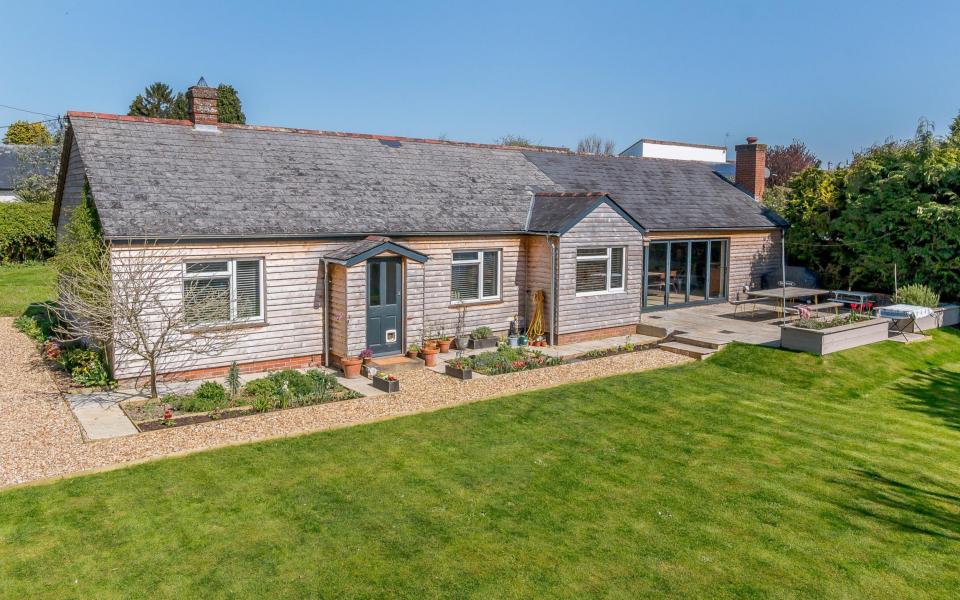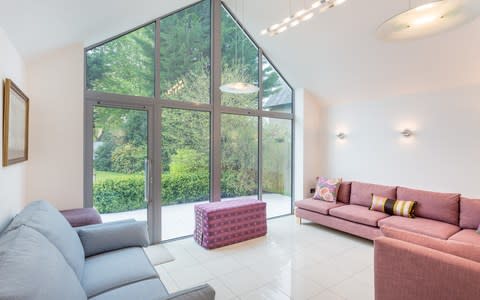The rise, fall (and rise again) of the much-loved bungalow

They’re much maligned by some as a throwback to an unfashionable age, but despite that buyers love them. Bungalows are routinely voted in surveys to be the most desirable property type in the UK for all age groups. A poll by retirement housebuilder McCarthy & Stone found that 54 per cent of over-65s – equal to 6.6 million people – would consider moving to one.
Yet they are becoming rarer than hens’ teeth, chiefly for one reason: developers like them too because they are knocked down and replaced with taller homes. Or, if you’re building from scratch, developers now simply don’t construct bungalows in the first place, because multi-storey houses and blocks of flats produce bigger profits from the same plot size.
Figures from the National House Building Council show that in 1987, 15 per cent of new homes were bungalows; by 1997 that had shrunk to seven per cent, and in 2007 it was 3.5 per cent. And last year? Just two per cent. That means a decline from 26,406 built three decades ago, to only 2,210 in 2017.

There are some chinks of light: McCarthy & Stone has well over 200 bungalows in new schemes now being built at Wymondham in Norfolk, Chipping Norton, Oxfordshire, and Buntingford in Hertfordshire, plus land earmarked at other sites for 180 more. But these are exceptions to the rule, and are part of retirement developments, rather than mainstream properties for buyers of all ages.
Other factors have indirectly hastened the decline of the bungalow. Since 2016, councils have been obliged by law to sell off their highest-value housing stock lived in by social tenants; the Joseph Rowntree Foundation predicts this includes 15,300 bungalows that are likely to go by 2021, equal to one in 15 of the total number in England. This is bad news for older council house tenants, and it could also be developers that snap them up to simply build anew on the land.

Harry Pension, 74, a former police officer, may have moved into his bungalow before they become extinct completely. Last year, he moved into one that his family bought for him near Diss in Norfolk. At £230,000 it cost the same as a modest-sized family home, thanks to the premium that bungalows attract as demand vastly exceeds supply. Figures from Rightmove suggest that the average bungalow is 16.3 per cent more expensive than an equivalent house on more than one floor, costing an average of £323,351, compared with £278,068.
“It was upsetting to leave my house, but it was too hard to manage,” explains Pension. “A bungalow is ideal for all the obvious reasons: size, smaller garden, no stairs. But it took around a year to find one on sale in the right place and it wasn’t much cheaper than my previous terraced house, which is why my sons stepped in to help with the payment.”
Now MPs have taken up the fight in the countryside. The All-Party Parliamentary Group on Housing and Care for Older People says that by 2038 more than 40 per cent of rural households will include someone aged over 65, and it wants council planners to secure appropriate homes for them, upping the number of bungalows built.

The single-storey is in short supply in cities, too. Research on Rightmove shows there are just 142 bungalows for sale in London out of around 52,000 homes listed in total; in Manchester there were fewer than 70 among 4,370 listings; and in Birmingham just 122 out of 3,760. Prices in all of these locations were higher, too: bungalows usually start at £100,000 (and more than twice that much in London) making their cost per square foot among the highest of any type of home.
But there is a little good news. Experts say that if you can snap one up before a developer does, the bungalow lends itself to modernisation and, of course, more than holds its value. “Bungalows have been lived in by the elderly, for obvious reasons, and are often not in great condition when they come to market,” explains James Shaw of the buying agency Prime Purchase. “But making changes should be straightforward, as walls aren’t load-bearing in the same way as in a two-storey property. They lend themselves to refurbishment.”
Research on Rightmove shows there are just 142 bungalows for sale in London out of around 52,000 homes listed
The poor design of most bungalows constructed in the Sixties and Seventies makes this the priority for many. For the more adventurous, bungalows typically have large gardens making extensions possible.
If the roof has 8ft 2in of space at its highest spot, the space inside could be used for a bedroom or mezzanine while still preserving the essential single-level feel of the bungalow. This might even be possible under so-called permitted development rights, meaning it would not require planning consent as long as the home was outside a conservation area. You could, of course, extend it into a house. But should we really lose a bungalow when they already face extinction? That would be a sad way to end a storey.

 Yahoo Finance
Yahoo Finance 